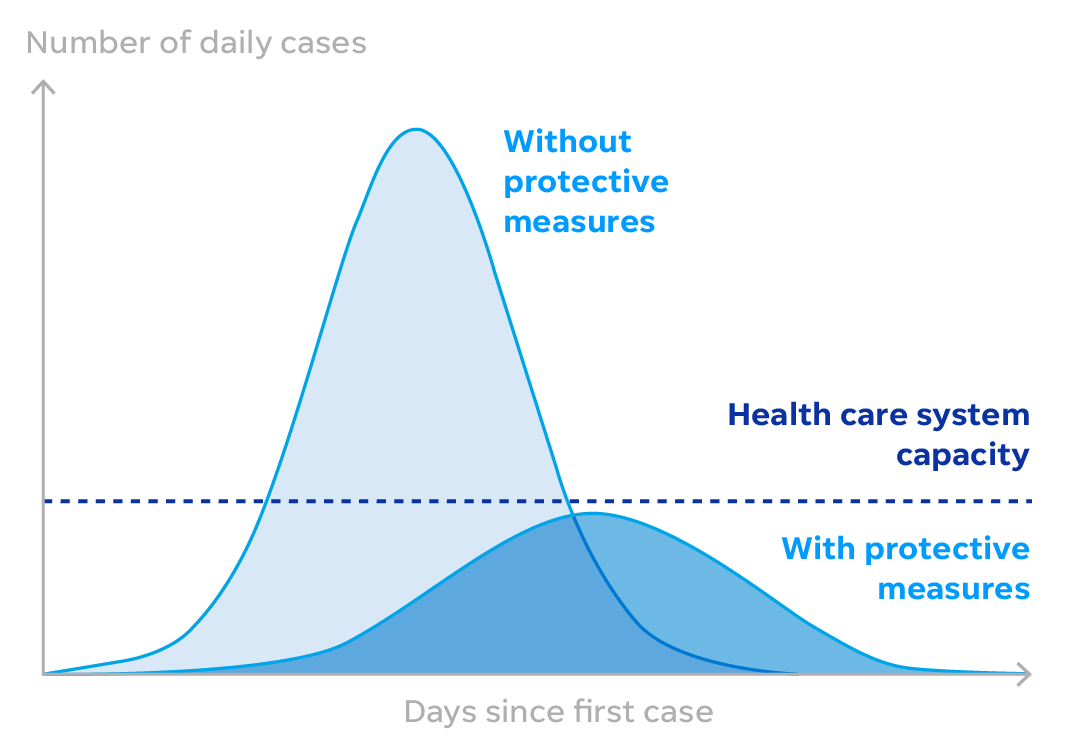Flatten The Curve: The Only Way America Can Handle The Coronavirus Pandemic
- Health officials are begging us to help "flatten the curve" of the COVID-19 coronavirus pandemic.
- But what does it mean to flatten the curve, and why is it so important?
- Visit BGR's homepage for more stories.
In all the drama surrounding the novel coronavirus pandemic, it can be hard to navigate a whole new world of phrases and terms. One of the terms you've probably heard a lot about is "flattening the curve," but what does that even mean, and why is it so important to help us make it through this difficult situation?
Before we talk about flattening the curve it's best to understand that it applies to how an illness — in this case, COVID-19 — spreads in a population. If you were to plot the number of infections on a graph, it wouldn't go up in a straight diagonal line. When left unchecked, or if we don't do enough to prevent new infections, the rate of new cases increases exponentially, with many times more people affected each day.
When health officials talk about "the curve," they're talking about the upward curve of daily new infection tallies when plotted on a line graph. The more rounded the curve is, the worse of a job we're doing to prevent new infections. "Flattening the curve" refers to keeping the number of new cases on a lower and more predictable trajectory.
But why does that matter? If the illness is going to eventually get to you, why not just get it now and get it over with? Health care systems only have the capacity for a certain number of sick people at any given time. Overwhelming that capacity means that people will inevitably be turned away, and in the case of this coronavirus pandemic, many, including the elderly, are at extreme risk of serious health consequences and death.
Hospitalizing the most severe cases is something that doctors around the world are already doing, but there are only so many hospitals, and only so many beds in those hospitals to monitor sick people. This is where flattening the curve is so important.
Even if we can't stop the outbreak, slowing the rate at which new people are infected allows health care systems to handle those patients and give everyone the care that they individually need. The CDC has a nice little graph that shows how this works:

In the scenario where we can't control the pace of the outbreak, many, many more people will suffer more serious health consequences and inevitably more deaths will result. However, if we slow the rate at which those infections happen, more people get the help they need. Even if both scenarios result in the same number of people being infected, a slower rate of infection saves more lives and gets sick people healthy faster.
Now, the big question is what can you do to help flatten the curve? Measures like social distancing — avoiding large crowds, working from home if that's an option, and generally staying inside — and sanitizing routines are good steps.
If you come down with a coronavirus infection, self-quarantine or hospitalization are the two options. If you're young and healthy, you likely won't qualify for a spot in the hospital, but that doesn't mean you can freely travel around town. Stay inside, hunker down, and take any possible steps to ensure your infection doesn't spread to more people. Talk to your doctor (over the phone) or an established local coronavirus hotline for guidance on when it's safe to resume a more normal routine. This may mean staying inside for several weeks.
Ultimately it will be up to each and every one of us to do our part to slow the spread of COVID-19. If you think you're sick, stay home, call ahead before visiting a clinic, and avoid contact with others. If you're well, help others who may be self-quarantined by dropping off food or other supplies. Check-in on friends and family, especially elderly parents and grandparents.
This is a serious situation, so do your part.
